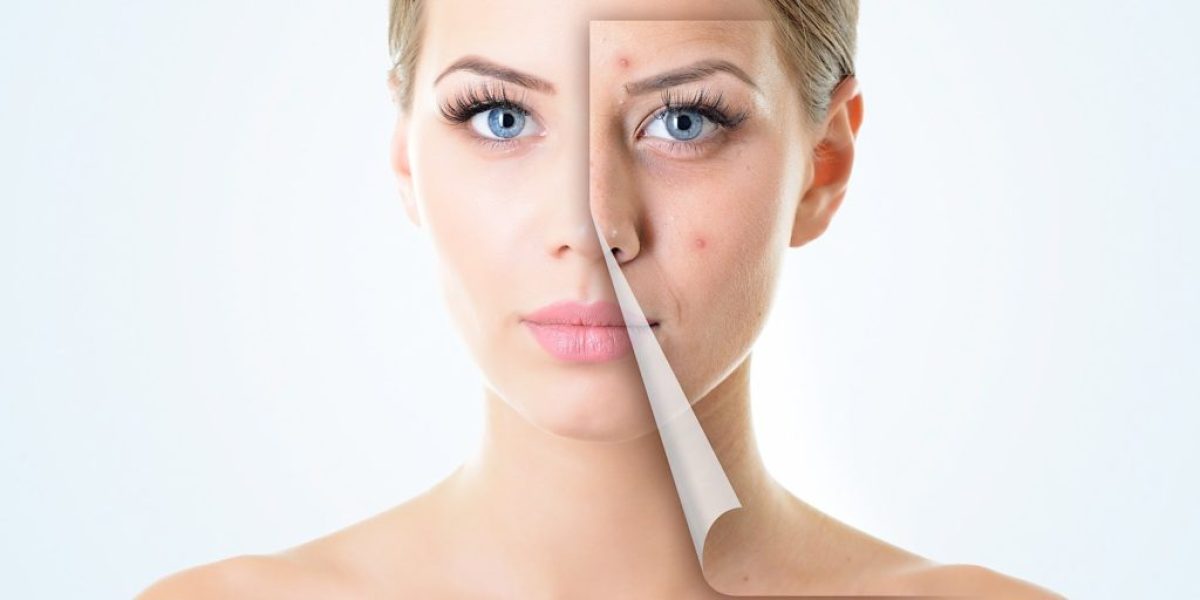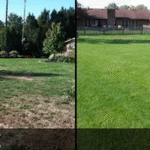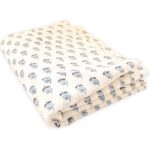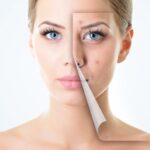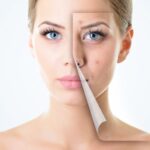Acne scars are the result of inflammation within the dermal layer of skin, triggered by breakouts from clogged pores. When acne lesions heal, they often leave behind pigmented marks or indentations due to damaged skin tissue. For individuals with oily and acne-prone skin, the likelihood of developing scars increases due to more frequent and severe breakouts. The skin’s natural healing process may be disrupted by repeated inflammation, leading to either atrophic (depressed) or hypertrophic (raised) scars. Understanding the types and causes of acne scars is the first step in selecting an appropriate treatment strategy tailored for oily skin.
Challenges of Treating Oily and Acne-Prone Skin:
Treating acne scars on oily and acne-prone skin presents unique challenges. Oily skin is more prone to breakouts, which can delay scar treatment or even worsen existing scars. Excess sebum clogs pores and can interfere with certain topical treatments, reducing their effectiveness. Moreover, acne-prone skin is often sensitive and may react poorly to aggressive procedures. Therefore, a balanced approach that controls oil production while addressing existing scars is essential. Treatments should aim not only to repair past damage but also to prevent future scarring by managing active acne simultaneously.
Topical Treatments for Acne Scars:
Topical treatments remain the first line of defense for managing mild acne scars. Ingredients such as retinoids, alpha hydroxy acids (AHAs), beta hydroxy acids (BHAs), and niacinamide are widely used for their ability to exfoliate dead skin, boost collagen production, and reduce hyperpigmentation. Retinoids accelerate cell turnover and help fade discoloration while minimizing the appearance of shallow scars. AHAs and BHAs work by dissolving dead skin cells and reducing clogged pores, making them particularly suitable for oily skin. Niacinamide helps regulate oil production and supports overall skin health. Consistency is key, as noticeable results may take several weeks or months.
Chemical Peels for Skin Renewal:
Chemical peels can be an effective solution for acne scar treatment, especially for oily skin. They involve applying a solution that exfoliates the top layers of the skin, encouraging new skin to grow in its place. Medium-depth peels containing salicylic acid, glycolic acid, or trichloroacetic acid (TCA) are commonly used to target post-acne pigmentation and textural irregularities. These peels also help reduce oiliness and control acne outbreaks. While chemical peels can offer visible improvement in skin texture and tone, they require proper aftercare and sun protection to avoid complications, particularly in sensitive or inflamed skin.
Microneedling for Collagen Induction:
Microneedling is a minimally invasive procedure that involves tiny needles creating micro-injuries in the skin to stimulate collagen and elastin production. This treatment is particularly beneficial for atrophic scars such as ice pick, boxcar, or rolling scars. It helps smooth uneven skin texture while improving skin elasticity. For oily and acne-prone skin, microneedling offers the advantage of minimal disruption to the skin’s surface, reducing the risk of irritation. It is often combined with serums or platelet-rich plasma (PRP) to enhance healing and results. Repeated sessions over time can lead to significant improvements in scar visibility.
Laser and Light-Based Therapies:
Advanced laser treatments, including fractional laser resurfacing and intense pulsed light (IPL), have become popular for targeting deep acne scars. Fractional lasers work by creating controlled microscopic injuries in the skin to stimulate new tissue growth and collagen remodeling. IPL, on the other hand, targets pigmentation and redness associated with post-acne marks. These technologies are effective in reducing both discoloration and texture-related scars. However, they must be carefully selected based on skin type to avoid post-inflammatory hyperpigmentation, which oily and acne-prone skin types are more susceptible to. A patch test or gradual introduction is often recommended.
Combining Treatments for Long-Term Results:
A multi-modal treatment plan is often the most effective approach to treat acne scars in oily and acne-prone skin. Since this skin type is complex and reactive, combining treatments like microneedling with chemical peels, or topical therapy with laser sessions, can enhance outcomes while minimizing risks. It’s also important to support professional treatments with a consistent at-home skincare routine, including gentle cleansers, non-comedogenic moisturizers, and broad-spectrum sunscreen. Treating acne scars is a gradual process that requires patience and commitment. With time, proper care, and a comprehensive strategy, it is possible to achieve smoother, clearer, and healthier-looking skin.
Conclusion:
Treating acne scars on oily and acne-prone skin requires a thoughtful and personalized approach. By understanding the unique challenges of this skin type and utilizing a combination of treatments—from topical solutions and chemical peels to microneedling and laser therapies—significant improvements can be achieved. Consistency in both professional care and daily skincare routines is essential for long-lasting results. With patience and the right strategy, individuals can effectively reduce the appearance of acne scars and restore smoother, healthier skin.

